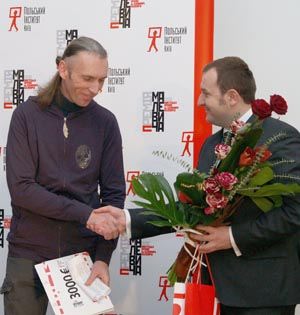Ivonna Malevich: Malevich reacted to the Holodomor through both art and poetry

The arrival of Ivonna Malevich, the grand-niece of the famed artist, to this year’s Malevich Award ceremony was a real sensation. She shared some interesting facts about the life of her famous ancestor. Few people know that Kazimir Malevich wrote poems. The first found one is dated 1906. It is interesting that it is mostly civil lyrics. According to Ivonna Malevich, the father of suprematism did not only react to the Holodomor with his “Second Peasant Cycle,” but also through poetry. In that time, when he came to Kyiv to visit his sister Viktoria and, according to Ivonna, “to heal Ukrainian artists from realism.” Unfortunately, we have not managed to learn more about Malevich’s reaction to the Holodomor as of now. Though, it is known that now Ivonna collaborates with a German museum and several Polish researchers in order to publish an album that will include Malevich’s poetry and art works. After publication his poems may be translated into Ukrainian, and appear in Ukrainian bookstores.
“Founding the Kazimir Malevich Art Award in Kyiv was quite appropriate,” Ivonna says. “There were a lot of events that united the artist with Kyiv. First of all, he was born here. I was so happy to come to the city and walk around the places where the father of suprematism walked.”
Stas Voliazlovsky, a video and photo artist from Kherson, won the Award, which comes with a 13,000 euro prize and three-month residence in the Ujazdow Castle, the Polish Center of Contemporary Art. The author calls the style he works in, chanson-art, “which is irony and self-irony. An ironical attitude towards reality (it includes politics, traditional art, mass media and everyday life) is a distinguishing feature of his art. The author takes much pleasure in stressing the distance between his art and the ‘national’ smack of the cultural officialese.”
Totem Center of Youth Initiatives based in Kherson nominated Stas Voliazlovsky for the Award. The winner was selected by the Polish and Ukrainian jury, which consisted of Jaroslaw Godun, the director of the Polish Institute in Kyiv, Natalia Zhevaho, the founder of the Cultural Project Foundation, Fabio Cavalucci, the director of the Ujazdow Castle, Alevtyna Kakhidze, the Malevich Award winner in 2008, Anna Lazar, the deputy director of the Polish Institute in Kyiv, Olesia Ostrovska, the chairman of board of the Center for Contemporary Art foundation, and Monika Szewczyk, the director of the Arsenal gallery in Bialystok.
“There is a living tradition of Ukrainian futurism in Kherson,” Olena Afanasiava, the director of Totem Center of the Youth Initiatives, explains. “The Burliuk borthers, Mikhail Larionov, Velimir Khlebnikov and Vladimir Mayakovsky started in Kherson. That is why we started Terra Futura, the small-scale festival of contemporary art.”
Moreover, Totem does not only actively support contemporary projects, but also takes care of the art heritage of the Ukrainian nativists.
Let us remind that the Polish Institute in Kyiv initiated the Kazimir Malevich Award in 2008 on the occasion of 130th anniversary of the artist. It is a biennial award, which is given to young Ukrainian artists. This year the artists from Kolomyia, Kyiv and Kherson were the finalists of the Award.
Newspaper output №:
№76, (2010)Section
Day After Day





